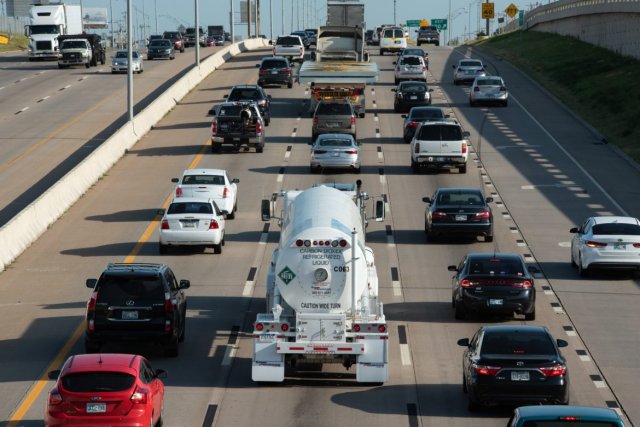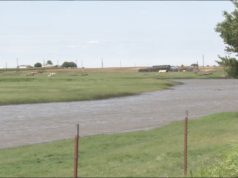

(Editor’s note: This story was authored by Trevor Brown of Oklahoma Watch and appears here in accordance with the non-profit journalism organization’s republishing terms.)
Oklahoma’s air may be getting worse.
That bucked a trend in which Oklahoma, like most of the country, had seen significant strides in making the air healthier during much of the past decade.
An Oklahoma Watch analysis of the federal statistics show that in the 13 Oklahoma cities with air quality monitoring stations, air quality was classified as “good” in 78% of days in 2018. That’s down from a record high of 83% in 2016.
The number of days considered unhealthy for at least sensitive groups climbed to 45, up from 20 in 2017, 12 in 2016 and just 5 in 2015.
Oklahoma isn’t alone.
The Associated Press recently reported that across the country, there were 15 percent more days with unhealthy air in each of the last two years than there were on average from 2013 through 2016. During those four years the county had its fewest number of unhealthy air days since at least 1980.
Experts caution that in addition to man-made pollutants, many factors can affect air quality in Oklahoma, including temperature, drought and wildfires, which struck the western part of the state a few years ago. More data is needed to determine if the decline in air quality is a trend or not.
But environmental and health-policy advocates say the data is a warning sign. They say efforts to reverse Obama-era environmental regulations could undo years of progress and more needs to be done to protect public health.
“Really, in the last 50 years we have seen so much improvement, but we are starting to see things turn,” said JoAnna Strother, regional director of public policy for the American Lung Association. “I don’t know we are calling it trend yet, but I definitely think this should serve as a call for immediate action.”
Alerts in OKC, Tulsa
The data is particularly striking in Oklahoma City and Tulsa, which have historically recorded the greatest number of unhealthy air quality days.
During the last two years, Oklahoma City saw a total of 19 days when air quality measures fell below acceptable EPA standards; the days were categorized as unhealthy for “sensitive” groups, including people with lung disease, including asthma, and for older adults and children. That exceeded the total number of substandard air-quality days the city recorded in the four previous years combined.
Tulsa also experienced an increase in poor air quality days last year, with alerts on 10 days that the air was unhealthy for sensitive groups and one day when the entire population was warned it was unhealthy. That was the most the city has seen since 2013.
Despite the 2017-18 dip in air quality, regulators and environmental activists agree the state’s air is still significantly better than it was decades or even several years ago.
As early as 2011, air monitoring stations across the state recorded some of the highest numbers in modern history on the Air Quality Index. The EPA uses that measure to rank each day, taking into account the most common air pollutants, such as ground-level ozone, particle pollution, carbon monoxide and sulfur dioxide.
Days with a score of 100 or below are considered “acceptable,” although some unusually sensitive people are warned to reduce prolonged outside exposure or heavy exertion when it gets above a score of 50. The Oklahoma Department of Environmental Quality sends alerts when the scores rise above 100 – a “code orange” meaning unhealthy for sensitive groups – or 150 – a “code red” meaning unhealthy for the entire population.
Almost all air monitoring stations in Oklahoma recorded a double-digit number of “code orange” days in 2011. In both Oklahoma City and Tulsa, more than 10 percent of the year was classified as unhealthy for sensitive groups.
After 2011, EPA data shows air quality conditions steadily improved each year through 2016.
That changed in 2017, when the number of code orange or red days increase slightly for several major cities, including Oklahoma City.
Last year that downward trend continued as the number of code orange or red days were the highest since 2013 or 2012.
DEQ data shows that high levels of ground ozone pollution and fine particle pollution were the most common culprits for Oklahoma’s poor air-quality days.
According to the EPA, high levels of ozone occur when pollutants emitted by cars, power plants, industrial boilers, refineries, chemical plants and other sources chemically react in the presence of sunlight. The EPA states that “ozone is most likely to reach unhealthy levels on hot sunny days in urban environments, but can still reach high levels during colder months.
Particle pollution, meanwhile, can be caused directly by sources, such as construction sites, unpaved roads, fields, smokestacks or fires. Particle pollution can also be emitted from power plants, industries and automobiles.

Causes in Question
Curt Goeller, environmental programs manager with the state DEQ’s air quality division, was surprised at first when Oklahoma’s air quality data showed a decline last year.
“We were scratching our heads about that for a little bit,” he said.
But after studying the data more, Goeller concluded that the most likely culprit was the severe drought and fire season that afflicted much of the West, including parts of Oklahoma, last year. (He acknowledged that many factors can affect air quality, including automobiles and power plants.)
Smoke from large fires can increase the amount of microscopic particles in the air that are dangerous when inhaled, Goeller said. On top of that, he said fire emits carbon monoxide and other chemicals that can cause hazardous ground-level ozone levels to rise, he said.
With a much wetter winter and spring so far this year, Goeller said he hopes the air-quality numbers in turn will improve.
“I’m anxious to see if this whole concern is a lot more weather-related than pollutant-related,” he said.
Others are more skeptical that fire and weather played the dominant role in worsening Oklahoma’s air quality.

Johnson Bridgwater, director of the Oklahoma chapter of the Sierra Club, said the drop in air quality here and elsewhere might reflect initial impacts of President Donald Trump’s moves to rollback dozens of environmental regulations.
Most notable is the Trump administration’s announcement in June that it will scrap the Clean Power Plan, one of Obama’s signature environmental rules aimed at reducing the country’s energy-generation emissions by nearly a third by 2030.
“For the environment, that’s where the Obama administration truly changed the United States, and now (the Trump administration) is systematically cracking back at it and trying to destroy it,” he said. “Now we are seeing the results of that.”
Oklahoma still doesn’t rank among the most polluted states in the country. Several cities in California and other western states, for example, recorded more than 100 code orange or red days last year. But Bridgwater said the consequences of letting the state’s air deteriorate are still dire.
“We’re talking about deaths, we’re talking about asthma attacks, we’re talking about restricted activity days,” he said. “It’s even literally telling people, ‘Hey, you might not want to go out today’ or ‘You might not want to mow your lawn.’”
DEQ spokeswoman Erin Hatfield said the agency is still studying the possible effects of Trump’s decision to replace the Clean Power Plan with a stripped-down policy called the Affordable Clean Energy rule, which calls for reducing emissions by only 0.7 to 1.5 percent by 2030.
She added it’s still too early to say whether Trump’s other deregulation moves have caused the drop in air quality.
Strother, of the lung association, said both Goeller and Bridgwater might be correct about the cause of the decline in air quality.
In April, her group published a study that links many of the weather-related factors cited by Goeller to climate change caused by man-made pollutants.
“The science is clear, and communities across the nation are experiencing the impact of climate change, including ozone and particulate pollution,” she said. “We are seeing some of the warmest temperatures on record … and so these extreme weather patterns will just continue.”





















